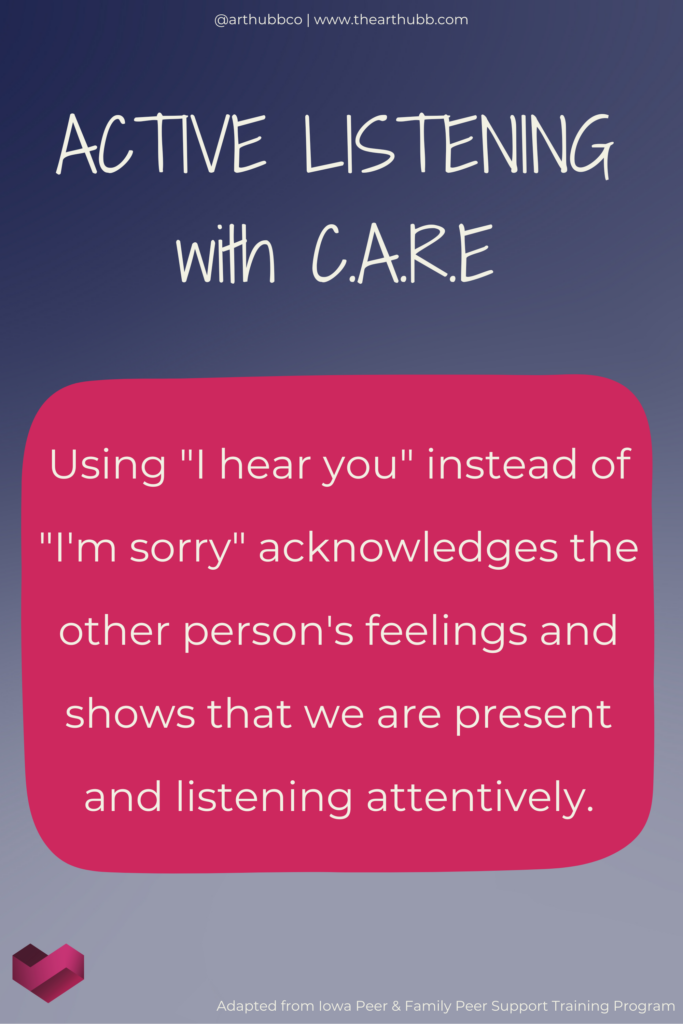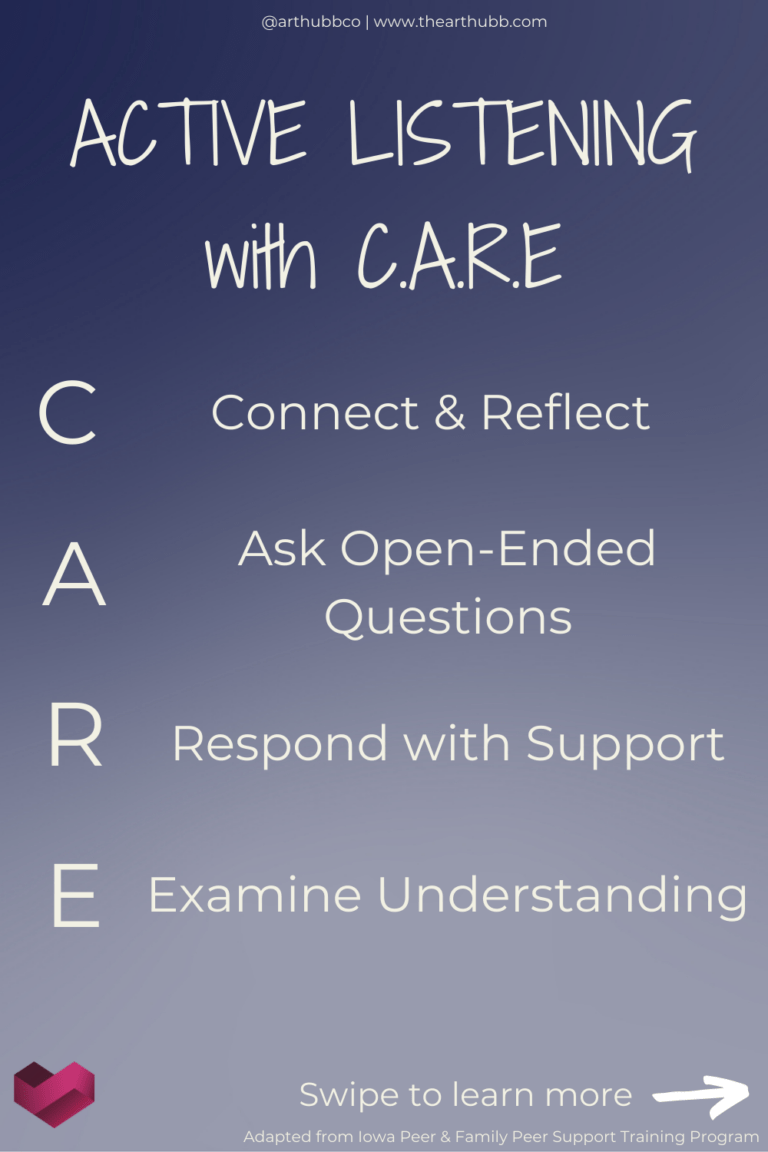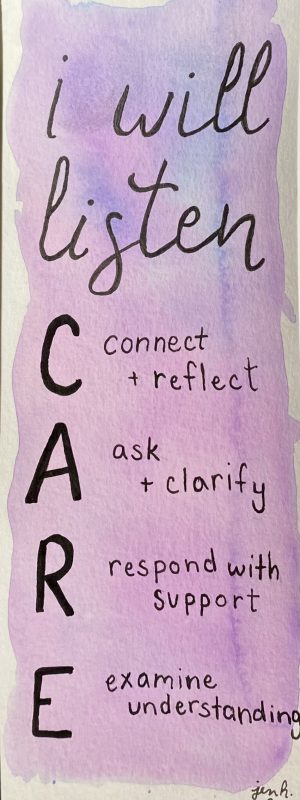Active Listening with CARE
Have you ever found yourself in a conversation where the other person seemed to be speaking a completely different language? Or maybe you’ve been on the receiving end of a conversation where you feel like no one is truly listening to what you’re saying. We’ve all been there, and it can be frustrating and isolating.
In fact, I recently found myself in a situation where active listening skills would have made all the difference. My friend was telling me about a problem they were facing, and instead of listening attentively, I found myself mentally checking out and waiting for my turn to talk. Needless to say, it didn’t end well.
That’s where active listening with CARE comes in. By using these simple yet powerful techniques, we can transform our conversations and create meaningful connections with the people around us. So, let’s dive into how we can use active listening with CARE to improve our relationships and communication skills.
What is Active Listening with CARE?
Active listening with CARE is a powerful tool that can transform our relationships and communication. CARE stands for C – connect and reflect back feelings, A – ask open-ended question, R – respond with support, and E – examine understanding. In this blog, we will explore each letter of CARE along with examples of how we can incorporate active listening into our daily lives.
Connect and Reflect Back Feelings
The first step in active listening with CARE is to connect and reflect back feelings. When we listen actively, we are not just hearing the words being spoken, but we are also trying to understand the emotions behind them. By reflecting back the emotions we perceive, we show that we are truly engaged in the conversations and are trying to understand the other person’s perspective.
Example: “I hear that you are feeling frustrated because you feel like your opinions are not being heard at work. Is that correct?”
Reason: Reflecting back feelings is important because it shows that we are empathetic and can help build trust in a conversation. It also helps to clarify any misunderstandings and ensures that we are on the same page as the other person.

Ask Open-Ended Questions
The second step in active listening with CARE is to ask open-ended questions. Open-ended questions are those that cannot be answered with a simple “yes” or “no.” They encourage the other person to share more information and provide greater depth and clarity to the conversation.
Example: “What steps do you think you can take to address this issue at work?”
Reason: Asking open-ended questions helps to keep the conversation going and encourages the other person to explore their thoughts and feelings more deeply. It also shows that we are genuinely interested in what they have to say.
Respond with Support
The third step in active listening with CARE is to respond with support. When we respond with support, we show that we are actively engaged in the conversation and are there to provide encouragement and guidance if needed.
Example: “I hear you’re feeling overwhelmed with your workload. It makes sense that you feel this way, given the number of tasks you have to manage. Is there anything I can do to support you or offer some advice on how to prioritize your workload?”
Reason: Using “I hear you” instead of “I’m sorry” acknowledges the other person’s feelings and shows that we are present and listening attentively. The empathetic statement also validates their emotions and helps to build a connection. By offering practical help and support, we demonstrate our willingness to help and show that we care about their well-being.

Examine Understanding
The final step in active listening with CARE is to examine understanding. This means that we take the time to make sure we have uderstood the other person’s perspective correctly and that we are both on the same page.
Example: “Just to clarify, you feel like your boss is not listening to your suggestions and you would like to find a way to address this issue. Is that correct?”
Reason: Examining understanding helps to avoid misunderstandings and ensures that we have a clear idea of the other person’s perspective. It also shows that we are committed to the conversation and want to make sure we are both on the same page.
Conclusion
In conclusion, active listening with CARE is a powerful tool that can help us build stronger relationships and improve our communication skills. By connecting and reflecting back feelings, asking open-ended questions, responding with support, and examining understanding, we can create a safe and supportive environment for meaningful conversations. So the next time you are having a conversation with someone, remember to use CARE and see the difference it can make.
Don’t forget! You can download your own Muenster Mood Meter here: https://thearthubb.com/printable-feeling-words-chart/
We’d love to see you practice your active listening skills during our Breakfast and Feelings Check-In on Twitch!
If you practice Active Listening with CARE, I’d love to hear how it works for you!
Subscribe to the ArtHubb Newsletter to receive news, updates, & more!




